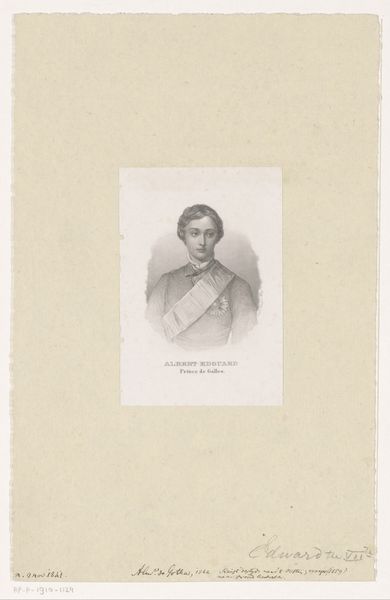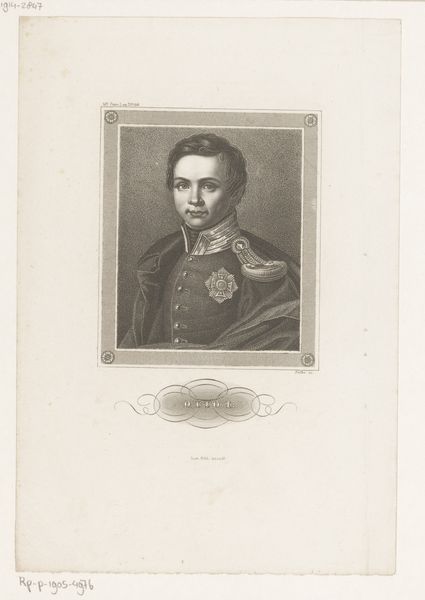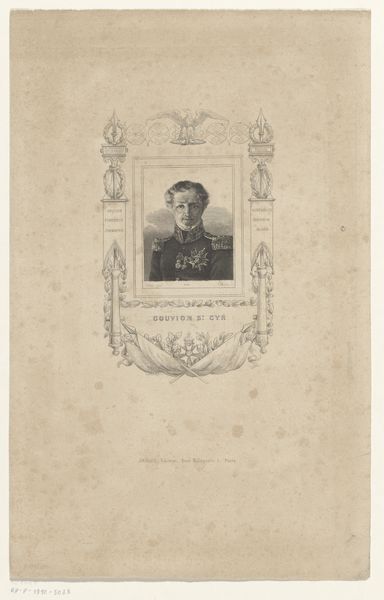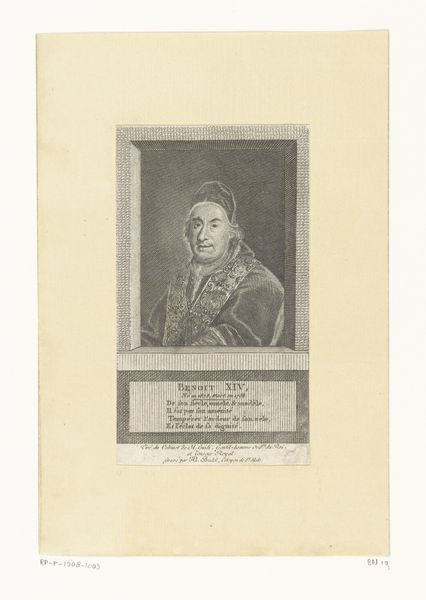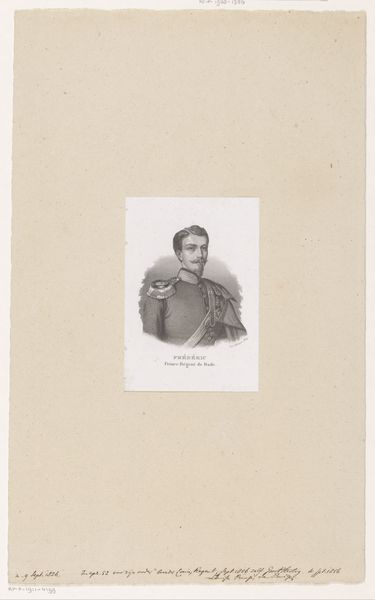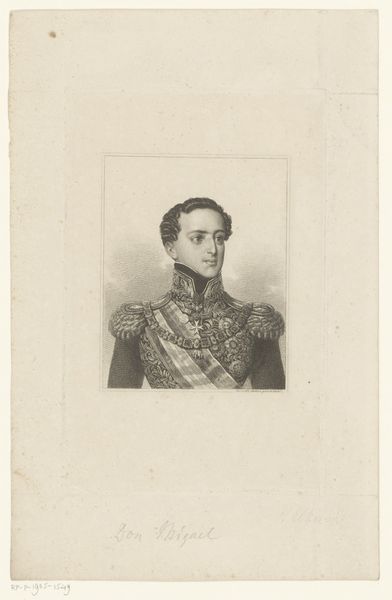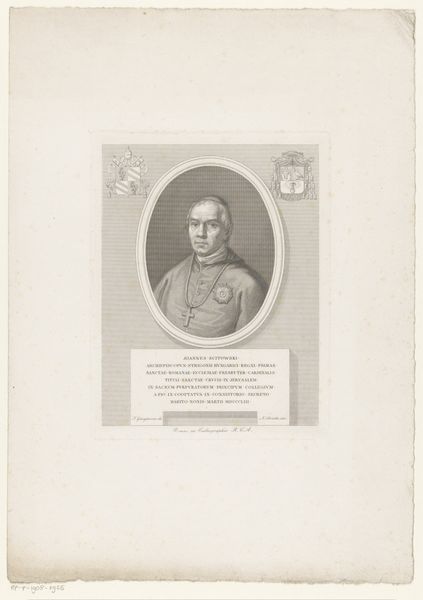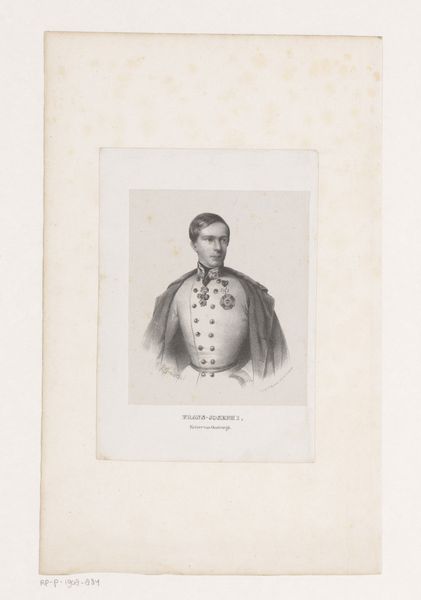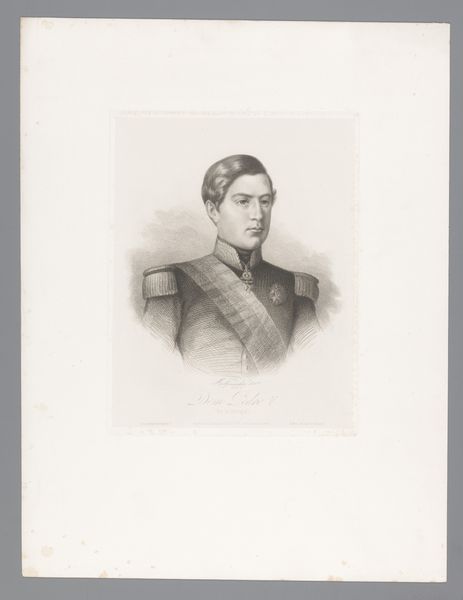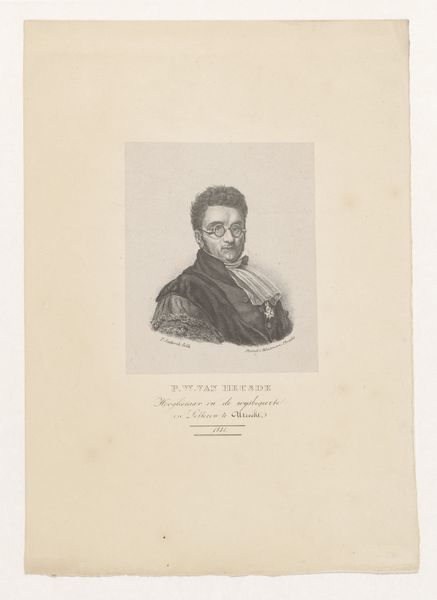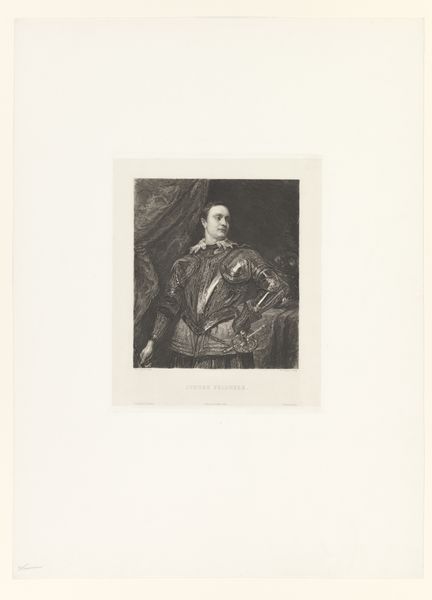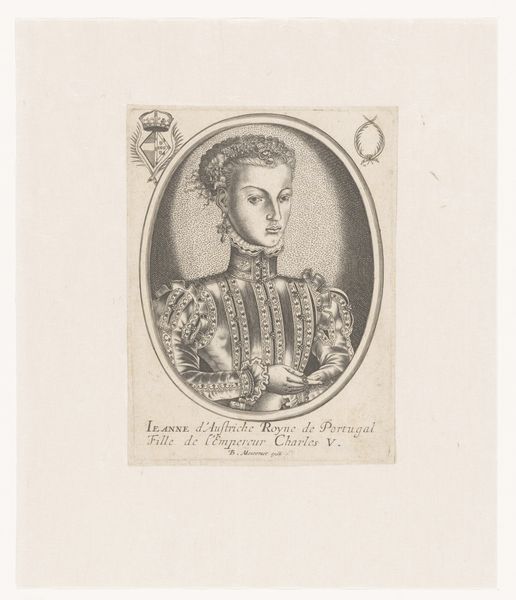
print, engraving
#
portrait
# print
#
romanticism
#
history-painting
#
academic-art
#
engraving
Dimensions: height 265 mm, width 178 mm
Copyright: Rijks Museum: Open Domain
Curator: My first thought looking at this engraving is of a man weighed down by the trappings of power. Editor: Indeed. What you're observing is a print, specifically an engraving, titled "Portret van Ivan Paskevitsj," created sometime between 1840 and 1850. The artist, Colleye, has captured Paskevitsj, a prominent figure of his time, in considerable detail. Curator: The cascade of medals, the ornate embroidery—they speak to a specific kind of romanticized militarism. It's like each symbol has a story of empire, of conquest… It feels undeniably weighted with historical baggage. What does that layering communicate to you? Editor: For me, it’s interesting how the artist uses the visual language of power – the medals as potent symbols – to craft an image of authority. The light catches those stars and crosses, elevating the figure, marking him as chosen. Romanticism was excellent at imbuing its subjects with almost mythical grandeur. Curator: Grandeur masking… what, exactly? In whose interests? These kinds of portrait, particularly from this era, served very particular political functions. The work of the artist isn't just representing, but reinforcing. He's selling a narrative. How are we meant to read that today, knowing what we do? Editor: I see your point. The medals, beyond being decorations, become stand-ins for a legacy, a form of cultural memory consciously cultivated and reinforced through imagery like this. Colleye is intentionally crafting and continuing that legacy. Curator: Ultimately, reflecting on the piece through a modern lens, it becomes more than just a portrait. It represents how visual representation itself can be wielded as a tool for shaping identity and solidifying social and political structures. Editor: It’s quite a dialogue this image creates, moving between aesthetic appreciation and critical evaluation of embedded meanings. It reveals that even seemingly straightforward portraits can hold layered stories, consciously perpetuated, that we must decode with nuance.
Comments
No comments
Be the first to comment and join the conversation on the ultimate creative platform.

